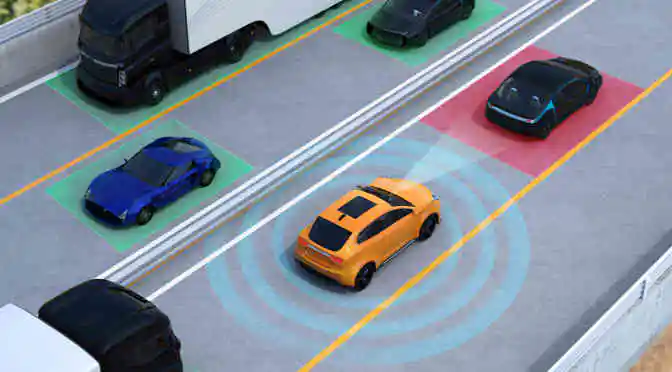Over the last century, the automotive industry has been disrupted by several game-changing innovations. These include electronic control units (ECUs) in automobiles, driverless car prototypes, and more recently, shifts to the mobility paradigm with autonomous vehicles, shared business models, and increased connectivity. Automatic driver assistance systems (ADAS) and vehicle autonomy rely on a range of technologies including sensors, cameras, and Vehicle-to-Everything (V2X) communication.
Although a number of components go into making a car self-driving, one technology in particular is proving to be more vital than all the rest- the ‘lidar sensor,’ a device that detects objects in 3D with pulses of laser light. The exclusively reliable and high-quality information that lidar sensing technology provides has made it the sensor of choice for automotive driving applications. In fact, experts emphasize that lidar is a necessity for self-driving cars.
How is lidar better than its counterparts?
Light detection and ranging (Lidar) technology have already proven its reliability and accuracy across thousands of consumer electronics applications over the past several years. The integration of lidar technology into the sensor suite within the self-driving vehicle promises to make cars more intelligent. Several automotive companies in the race to commercialize driverless vehicles consider lidar sensors essential over cameras and radar sensing technologies.
Cameras do not perform well, and radar sensors cannot see much detail in low light. A Tesla vehicle that relies entirely on cameras ran into a tractor-trailer last year, killing the driver, as the autopilot software could not recognize the trailer against a bright sky. Most experts in the automotive space prefer a trifecta of sensors; cameras, radar, and lidar. They need all three sensor capabilities, as each performs a different function. Cameras can identify the object, lidar can measure distance, and radar sensors can eventually provide a precise estimation of velocity.
Multiple obstacles to overcome
Lidar is becoming a critical sensor for self-driving vehicles, as explained by an industry expert at Technavio. However, he also points out that the size, cost, and complexity of the current generation of lidar sensors are critical obstacles to the commercialization of any innovation that depends on them. The autonomous vehicle technology has ramped up so fast that the nascent lidar sensor industry is experiencing a lidar lag.
The technology is not yet mature enough to become a significant component in millions of vehicles. Consequently, making and selling lidar sensors is a relatively niche business. One particular challenge that is apparent at first glance is the bulkiness of the technology. Alphabet’s self-driving unit is topped by a giant black dome, and Uber’s sport spinning tools are the size of a coffee can.
Additionally, lidar sensors are also expensive, costing thousands of dollars apiece. Most vehicles in testing have numerous lidars on board, and despite the small numbers on the road, demand has become a significant problem. As per the recent report, lidar sensor manufacturers are struggling to find their way out, forcing companies to wait up to six months for a new sensor.
The future looks bright for the lidar sensors market
Despite several impending challenges, most automotive companies are looking toward lidar sensors as the disruptive technology for the future of self-driving cars. Indeed, the technology is continuously evolving to match the critical needs of autonomous vehicles. A great deal of industry and academic research is being put into making lidar sensors smaller, cheaper and easier to manufacture.
One of the most exciting developments in lidar technology comes from MIT. Researchers have leveraged silicon photonics to abridge a functional lidar system onto a small 0.5-6-millimeter chip that can be fabricated in mercantile CMOS foundries. Although MIT’s prototype has a range of only a few meters, they have made serious headway in terms of developing a 100-meter range model with a per-chip cost of just $10.
By and large, the market for small and inexpensive solid-state lidar sensor systems is unsurprisingly immense. Though the automotive industry represents the largest market for low-cost lidar sensors, the availability of small and cost-effective lidar sensors will be advantageous for many industries. Lidar can help robots recognize and manipulate objects. They can empower mobile phones with high-resolution gesture recognition. And, lidar can give drones the data they need to avoid obstacles.



